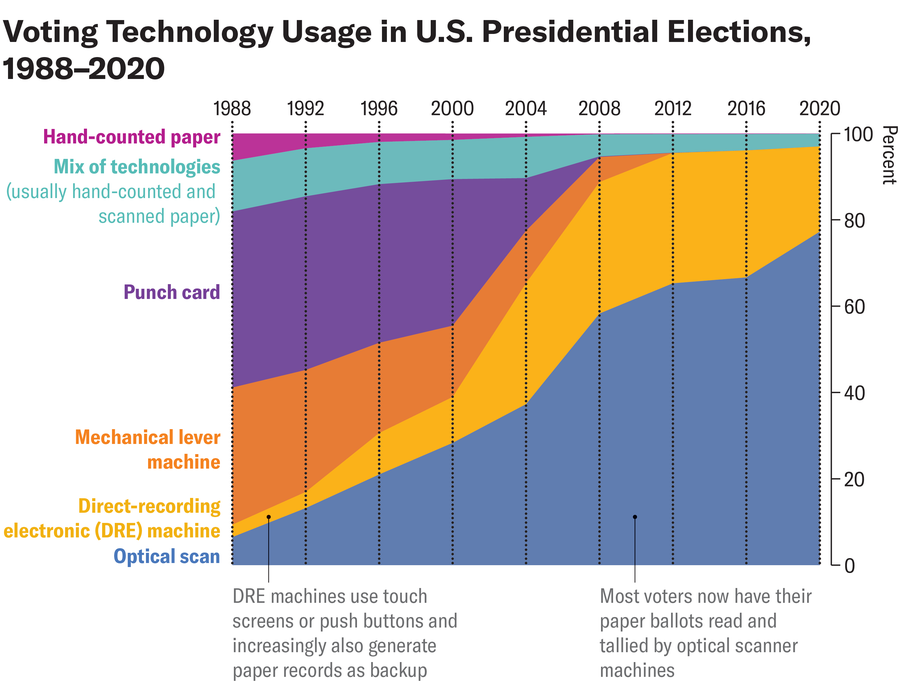CLIMATEWIRE | Climate scientists, environmental activists and philanthropists met privately last month to prepare for an expected surge of Silicon Valley funding related to last-ditch measures for slowing global warming.
The two-day gathering on solar geoengineering — or efforts to increase the reflectivity of the planet through spraying particles into the stratosphere or altering cloud cover — shows how the notion of limiting sunlight absorbed by the earth has moved from taboo to plausible in part by gaining the acceptance of tech industry billionaires.
The meeting at the San Francisco offices of the Environmental Defense Fund, which has publicly supported research into geoengineering since 2011, was held to help set best practices for a coming wave of philanthropic-funded studies into the concept, also known as solar radiation management. The meeting has not previously been reported.
On supporting science journalism
If you’re enjoying this article, consider supporting our award-winning journalism by subscribing. By purchasing a subscription you are helping to ensure the future of impactful stories about the discoveries and ideas shaping our world today.
Many of the roughly 30 scientists, environmentalists and funders at the meeting would prefer that guidelines for solar geoengineering research be established by a federal scientific coordinating body like the U.S. Global Change Research Program.
“That hasn’t come to be yet,” said Lisa Dilling, EDF’s associate chief scientist. The workshop was an acknowledgment of “the reality of the world as we see it now, which is that there are foundations starting to be interested in this topic.”
In theory, solar geoengineering could replicate the cooling response of natural phenomena like major volcanic eruptions, which can launch millions of tons of reflective sulfur dioxide particles miles into the sky. Supporters of the idea — including billionaires Bill Gates and George Soros — argue that human efforts to redirect sunlight could shave a few fractions of a degree off of global temperatures while the world economy kicks its addiction to fossil fuels.
But early research suggests that blanketing the stratosphere with aerosols for years or decades could damage the ozone layer and disrupt weather patterns, putting subsistence farmers and rain-dependent ecosystems at risk. It would also do nothing to address other harms associated with oil, gas and coal, such as local air and water pollution as well as ocean acidification.
Another risk of solar geoengineering is the potential for global temperatures to spike if large-scale spraying programs using planes, balloons or other machines were to end before carbon dioxide concentrations fall enough to avoid dangerous levels of warming.
Those concerns are often cited by scientists and activists as reasons to study geoengineering and to set guidelines for how it should be used — if it ever is.
“It is a recognition by one of the country’s most important environmental organizations that geoengineering is not something that can simply be ignored, that we can just hide our heads in the sand and pretended it will go away,” John Holdren, who served as former President Barack Obama’s science adviser, said of the meeting, which he did not attend.
“It’s something that requires attention by smart people inside and outside government,” said Holdren, who now teaches at Harvard University’s Kennedy School of Government.
‘Is it more dangerous than climate change?’
Whether solar geoengineering is ever worth implementing at some scale is an area of increasing interest for academics, philanthropists and policymakers.
“We need to put this in a scientific perspective,” said former Rep. Jerry McNerney (D-Calif.), who during his time in Congress used spending bills to create an aerosols research program at NOAA and ordered a White House review of the solar geoengineering science.
“Does solar radiation management make sense? Is it more dangerous than climate change? Or is it actually something that will help?” McNerney said. “There are a lot of unanswered questions that need to be investigated before any kind of policy decisions are made.”
The EDF-hosted meeting followed the world’s hottest year on record, and as extreme wildfires, droughts and storms make the effects of climate change increasingly visible. It also came after the passage of the Inflation Reduction Act and the bipartisan infrastructure law of 2021, both of which are making unprecedented public investments in projects intended to reduce the nation’s reliance on planet-warming fossil fuels.
The growing urgency of the climate problem, coupled with those legislative wins, are why there could be a new opening for environmental groups to engage more seriously on geoengineering, according to a former EDF official.
“We’re doing a lot on clean energy, renewables, efficiency, low-carbon steel and so on,” said Gernot Wagner, a climate economist at Columbia Business School who worked at the environmental group until 2016, when he left to help found Harvard University’s Solar Geoengineering Research Program. “Despite all of that … the need to consider solar engineering isn’t going away.”
Since Harvard began researching solar geoengineering, several other universities around the globe have launched similar programs. They include the University of Chicago, the University of Washington, Cornell University, Switzerland’s ETH Zürich and the Beijing Normal University in China.
‘Very explosive issue’
Tech industry leaders have long supported studying solar geoengineering. Among the backers of Harvard’s research program are Gates; former Google executive Alan Eustace; and the William and Flora Hewlett Foundation, which was established by one of the founders of the computer company HP.
Some private foundations are also seeking to directly fund solar geoengineering researchers. The Simons Foundation, a charity established by hedge fund billionaire Jim Simons and his wife, Marilyn, last April committed to spending $50 million over five years on solar radiation management projects.
“The foundation strongly encourages applications from scientists in the global south and from investigators who may not have worked in SRM but have expertise that could bring new perspectives and skills to this field,” the group said when it announced the funding opportunity.
EDF and its allies are discussing establishing a geoengineering program that could “lower transaction costs” for donors, according to Wagner, who wasn’t at the San Francisco meeting but said he knows many of the participants.
“There are lots of individual foundations that are interested in this topic. And what they then often do is invest a lot of time and money figuring out who to give the money to, and reinvent the wheel in many ways,” Wagner said. “This EDF-brokered effort is trying to funnel more than one foundation’s philanthropic giving in a similar direction and help guide that giving.”
Dilling, the EDF scientist, declined to provide a list of attendees but said the group would release a report on the workshop in the coming weeks that will likely include participants’ names. EDF also plans to “get some feedback from additional groups that weren’t able to attend,” she said.
The group is still trying to determine how deeply to get involved in solar geoengineering research and governance efforts.
“It’s not like we’re a stranger to this topic,” Dilling said. “But getting involved with any further developments, we’re basically exploring that right now.”
They are right to proceed cautiously, according to McNerney, who’s running for a state Senate seat in California.
Solar geoengineering research is “politically a very explosive issue,” the former congressman said.
McNerney applauded the scientists, advocates and philanthropists who are “taking up the responsibility to do this because they don’t see the government being able to step up to the degree that’s needed to do this properly.”
Reprinted from E&E News with permission from POLITICO, LLC. Copyright 2023. E&E News provides essential news for energy and environment professionals.














